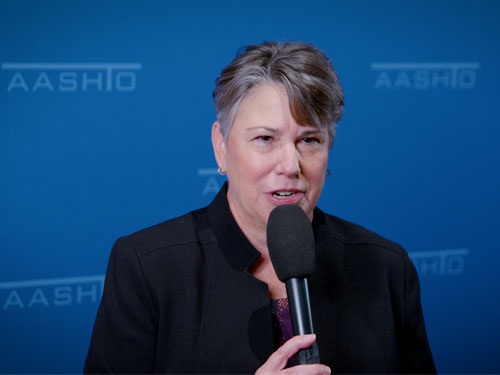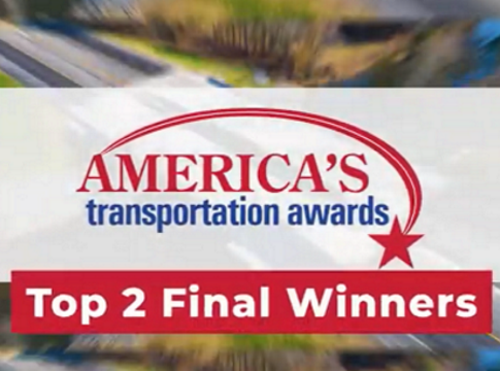An equity-inspired infrastructure project that reconnected a community of color in downtown Pittsburg and a project that is guiding active transportation projects and programs across Washington State received the top prizes in the 2022 America’s Transportation Awards competition.
[Above photo by AASHTO]
Sponsored by the American Association of State Highway and Transportation Officials, AAA, and the U.S. Chamber of Commerce, the 2022 America’s Transportation Awards involved 80 projects from 37 state DOTs.
Those projects first faced off in four regional competitions, with the three highest-rated projects from each region – 12 in all – moving on to compete for the final two national awards. An independent panel of industry judges selected the Grand Prize winner, while the project receiving the highest number of online votes – weighted by state population – earned the People’s Choice Award.
Presented at the 2022 AASHTO Annual Meeting in Orlando, the Grand Prize and People’s Choice awards each come with $10,000 cash prizes to support a charity or transportation-related scholarship program.

The Pennsylvania Department of Transportation’s I-579 Urban Open Space Cap Project earned the national Grand Prize. The Washington State Department of Transportation’s “Active Transportation Plan 2020 and Beyond” project was voted the People’s Choice Award winner.
“This year’s America’s Transportation Awards competition consisted of the most diverse group of projects we’ve seen in all 15 years of the competition,” said Jim Tymon, AASHTO’s executive director, in a statement.
“The Top 12 alone included a public engagement tool, a road diet project, a memo of understanding between an entire region that will get life-saving and emergency supplies to communities during disasters,” he added. “Our ultimate winners – an active transportation plan and a park project to reconnect a community divided by an interstate project several decades ago – are absolutely representative of today’s state DOTs and the wide range of work they do for our communities every day.”
In the 1950s, the U.S. Department of Transportation estimates that federal highway construction displaced more than 475,000 households and more than a million people nationwide. In Pittsburgh’s predominately African-American Hill District, construction of a convention center and Interstate 579 resulted in the destruction of several homes and buildings and the building of retaining walls separating the Hill District from downtown.

To address some of those issues, PennDOT’s I-579 Urban Open Space Cap Project improved bike and pedestrian access in the area by bridging the interstate with a new park. That new park includes story walls designed by local artists, an outdoor classroom, and performance and green spaces, all of which reconnects a community and spurs redevelopment and economic growth in the area.
Meanwhile, the WSDOT’s “Active Transportation Plan 2020 and Beyond” project is a first for the state.
It serves as a long-term strategic plan guiding active transportation policies, procedures, improvements and investments statewide while calculating the environmental, health, and economic benefits to society when people shift trips from driving to walking or biking.
In addition, the plan addresses safety for vulnerable road users and provides the first-ever examination of the suitability of state right-of-way for active transportation facilities.
 Top Stories
Top Stories
USDOT Makes $1.5B Worth of BUILD Grants Available
December 19, 2025 Top Stories
Top Stories

